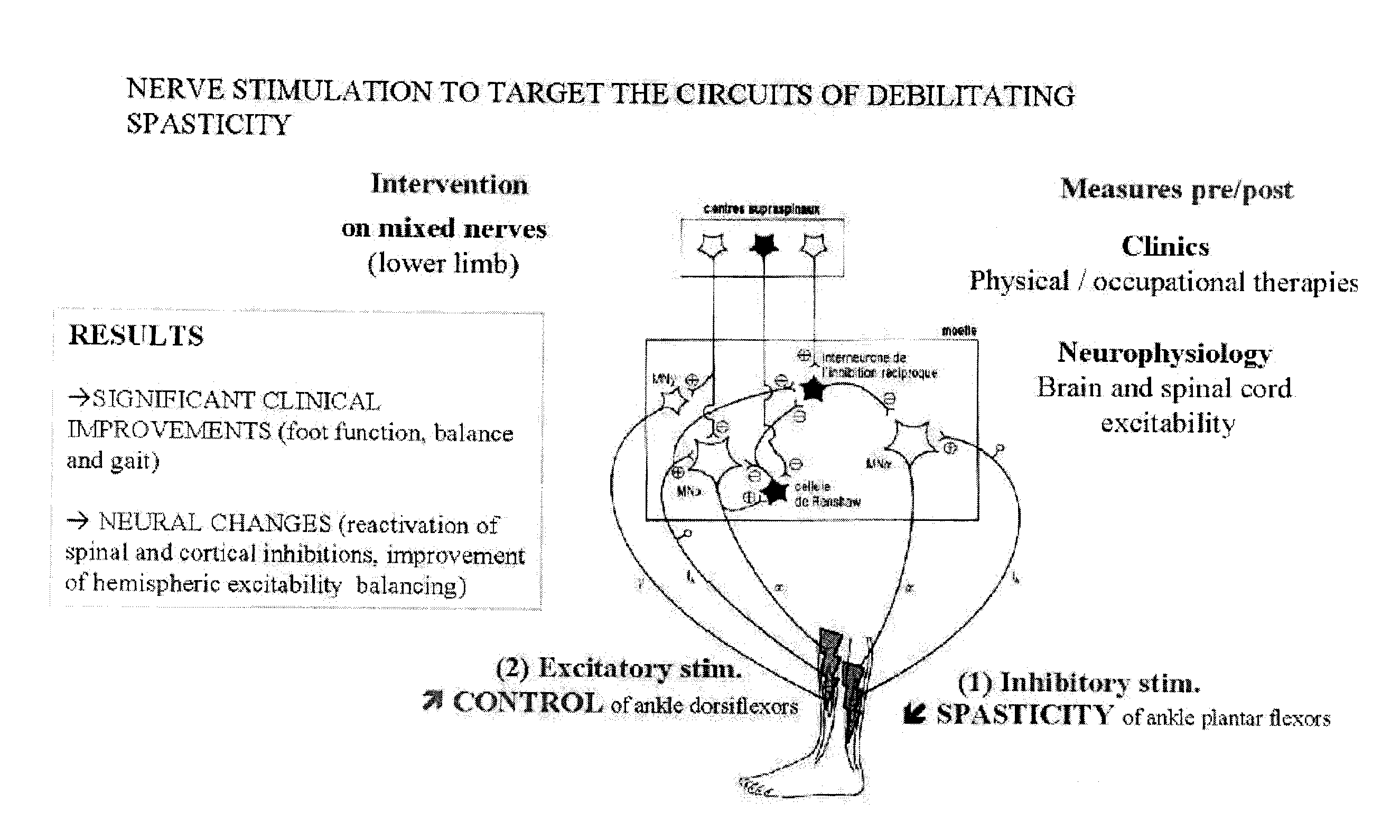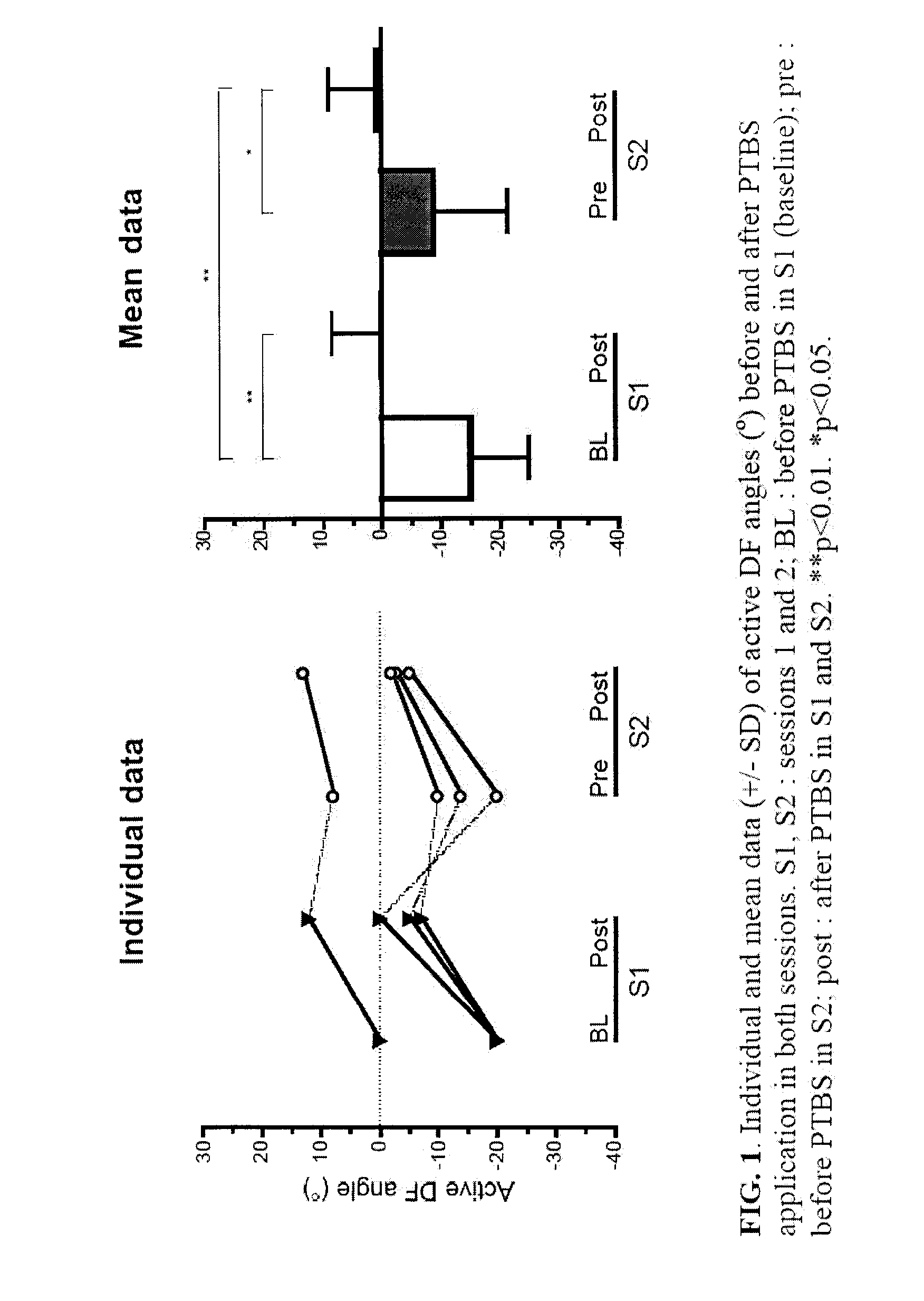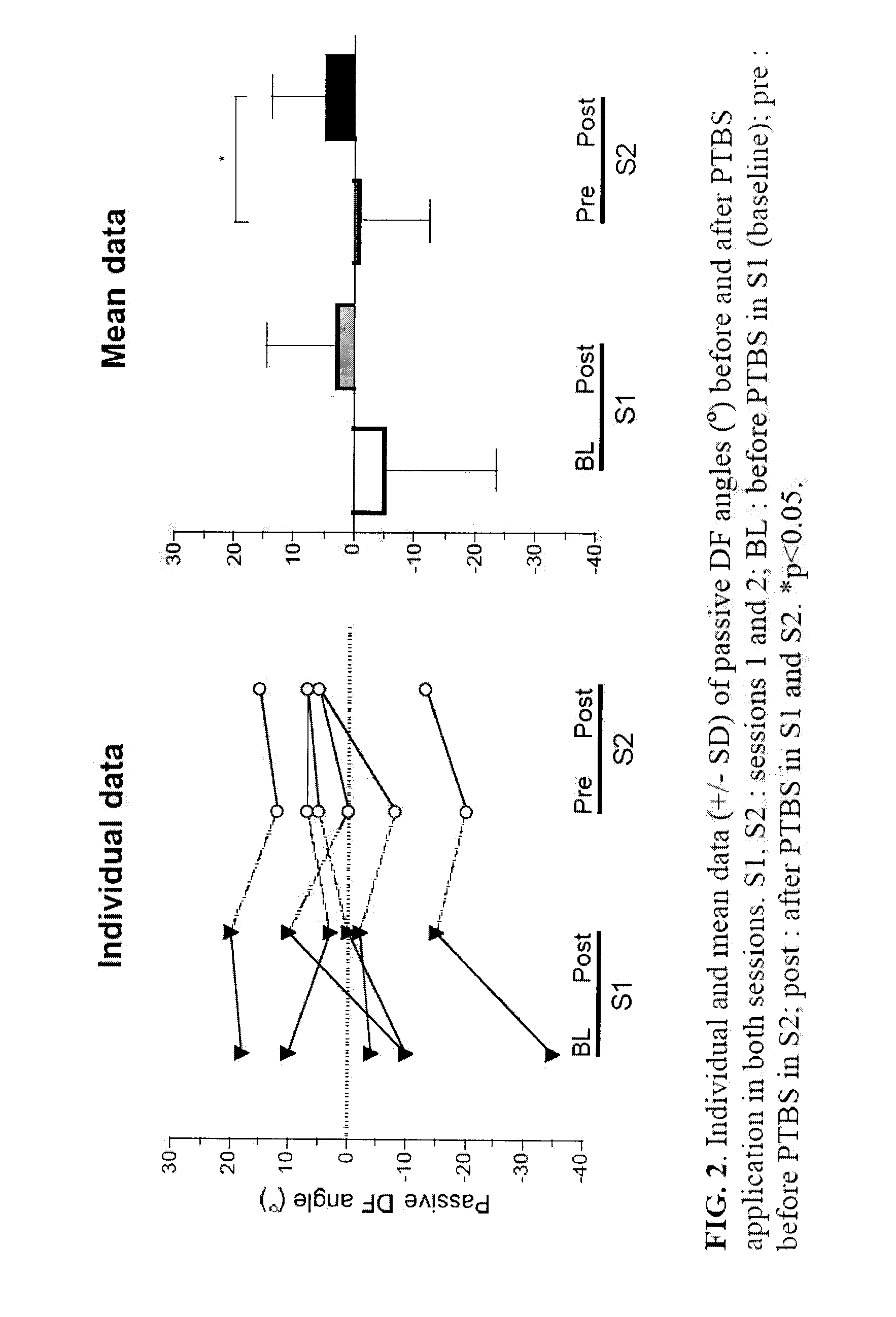Method and Use of Peripheral Theta-Burst Stimulation (PTBS) for Improving Motor Impairment
- Summary
- Abstract
- Description
- Claims
- Application Information
AI Technical Summary
Benefits of technology
Problems solved by technology
Method used
Image
Examples
example 1
The Use of Peripheral Theta Burst Stimulation to Reinstall Foot Function in Spastic Brain-Injured Subjects
Materials and Methods
Subjects
[0057]Six subjects aged 39.3 years (SD=16.5, range 20-57) were enrolled in this study under written informed consent approved by local ethics committees. Subjects had chronic stroke (2 men), aneurysm rupture (1 man, 1 woman with anti-convulsive medication), and severe acquired brain injury (2 women) (see Table 1). The birth handedness was determined according to Oldfield's inventory24. The inclusion criteria were spasticity at baseline (BL) for the plantiflexors of the paretic ankle and deficits in active dorsiflexion (DF), i.e. non functional-for-walking active DF (≦0°). A range of motion (ROM) of 0° DF represents a 90°-angle between foot and leg, as measured under standardized procedure. Negative vs. positive ROM (or less negative) represent reduced vs. increased DF.
TABLE 1Patients' characteristics.Stimulatedankle &AgeTime sinceNature and locationc...
example 2
Peripheral Neurostimulation and Specific Motor Training of Deep Abdominal Muscles Improve Motor Control of Postural Adjustment in Chronic Low Back Pain Subjects
Methods
Participants and Study Design
[0075]Thirteen right-handed individuals with CLBP (≦1-year pain, mean age=53.7±7.4 years, ranging 37-61 years, 6 males, Table 4) were recruited for one single session from our local Pain Management Centre and Physiotherapy Unit under informed written consent approved by local ethics committees, conform to the Helsinki Declaration. Nine healthy right-handed individuals (mean age=48.7±6.8 years, ranging 36-55 years, 4 males, Table 4) with no LBP affection in the last year were included as control group. This study was double-blind, randomized, placebo and controlled. Subjects were randomly allocated to 2 groups: 7 received peripheral TBS (TBS group: TBS alone then TBS+motor training), 6 received sham stimulation (Sham group: Sham alone then Sham+motor training). The exclusion criteria were LB...
PUM
 Login to View More
Login to View More Abstract
Description
Claims
Application Information
 Login to View More
Login to View More - R&D
- Intellectual Property
- Life Sciences
- Materials
- Tech Scout
- Unparalleled Data Quality
- Higher Quality Content
- 60% Fewer Hallucinations
Browse by: Latest US Patents, China's latest patents, Technical Efficacy Thesaurus, Application Domain, Technology Topic, Popular Technical Reports.
© 2025 PatSnap. All rights reserved.Legal|Privacy policy|Modern Slavery Act Transparency Statement|Sitemap|About US| Contact US: help@patsnap.com



